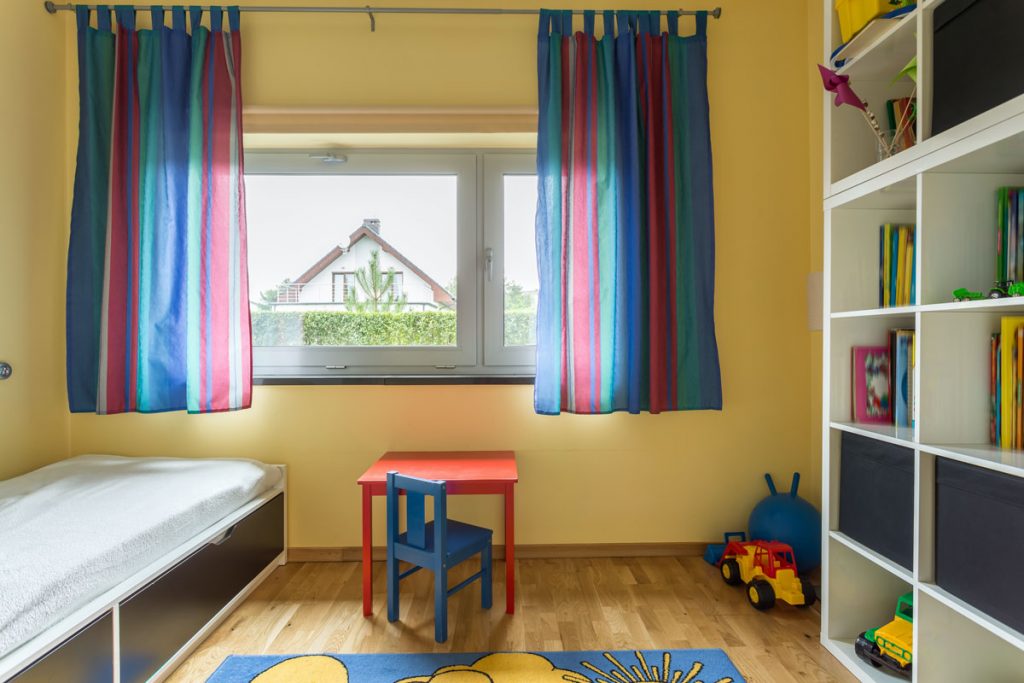
Providing a calming and nurturing environment for children requires a safe and inviting space for both adults and children to explore together. Calm and engaging environments offer predictability, stability and positivity for children. This is especially true when children have experienced challenging or stressful situations that upset their sense of security.
Educators and families can set the stage for a calming environment through three key approaches; 1) positive relationships, 2) organizing the environment, and 3) consistent routines. When the environment is predictable, supportive, and consistent, children feel safe to explore and learn, which in turn promotes the development of self-esteem and resilience.
Building a Positive Relationship
Consider the following when building supportive relationships and a welcoming environment.
- Greeting your child by name will strengthen your relationship with them and help you understand and respond to how your child may be feeling that day.
- Have appropriate expectations for your child – When setting your expectations, take into consideration your child’s likes, dislikes, interests, skills and learning style.
- Follow your child’s lead – Plan activities that capture your child’s interests and abilities.
- Provide opportunities for your child to have individual attention from a responsive adult. Even a few minutes of quality interaction using listening and eye contact will show your child that they are heard, they are special and that you are happy to be with them.
- Comfort and reassure your child quickly when they are distressed. It is important to recognize and label your child’s feelings.
- Include family and cultural practices throughout the day, ones that will help your child find a way to ground themselves within their identity.
Organizing the Environment
A well-designed environment promotes independence and fosters a sense of calmness. Consider the following when planning the play space.
- Create defined play areas – if possible, break up the room into areas using shelves, tables and other furniture.
- Create space to sit and relax where your child can take a break from loud sounds.
- Keep the room tidy, clearing away unnecessary clutter may reduce visual stimulation and help your child find what they need more easily.
- Reduce the number of toys available at the same time.
- Rotate play materials as necessary to continue to keep your child interested and engaged.
- Adjust the sensory input in the environment to support well-being. Can lighting or the noise level of the room be adjusted?
- Incorporate opportunities for movement and music into the daily routine.
Consistent Routines
The more consistent your daily routine, the easier it is for your child to anticipate what will happen next and make sense of the day. This predictability may help them cope with stressors. Consider the following.
- Use a visual schedule, showing pictures of the daily routine and step-by-step mini-schedules for parts of the day that are more stressful. This will increase predictability of the routine and help your child understand what is happening next. Model using the visual schedule and make it a fun experience with your child. Let them point out what is happening next.
- If your child has a high interest in technology, such as computers or tablets, structure their time for using technology by including this in the scheduled routine.
- Prior to transitions, give warnings that the transition is coming. Get down at their level and make sure they have heard you and are aware that the transition is coming.
Remember
Creating a safe, secure environment where your child can form meaningful and supportive relationships is critical to their social and emotional development. Providing consistent environments, relationships and routines can help your child feel safe to explore the world around them.
References
Burnett, Christie. (2020). Managing Big Emotions Through Movement: Yoga for Kids. Retrieved from https://childhood101.com/yoga-for-kids/.
Coping Skills for Kids. (2019). Deep Breathing Exercises for Kids! Retrieved from https://copingskillsforkids.com/deep-breathing-exercises-for-kids.
Kostelyk, Sharla. (2020). 175 Sensory Activity Ideas for Kids. Retrieved from https://www.thechaosandtheclutter.com/archives/175-sensory-activity-ideas-kids/.
Minero, E. & Fleming, N. (2020). DIY Ways to Meet a Child’s Sensory Needs at Home. Retrieved from https://www.edutopia.org/article/diy-ways-meet-childs-sensory-needs-home.
